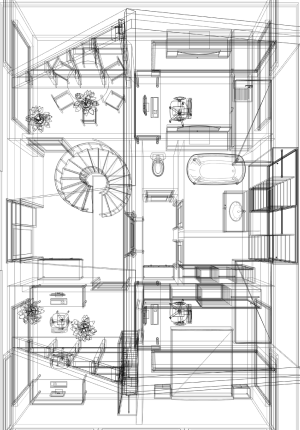Is a Ductless Heating System Right for Your Home?

In the quest for comfortable and energy-efficient home heating, many homeowners are turning to ductless heating systems, also known as ductless mini-split systems, which is a type of heating and cooling system that provides individualized temperature control for different areas or zones within a building without the need for traditional ductwork. These systems have gained popularity for their flexibility, ease of installation, and the numerous benefits they offer.
In this blog, we will explore why you should consider installing a ductless heating system.
- Energy Efficiency
One of the primary reasons to opt for a ductless heating system is its remarkable energy efficiency. Traditional heating systems with ductwork can vary and most can be quite energy-efficient, but this can be reduced with leaky ducts which can cause energy losses due to such leaks and inefficient insulation. In contrast, ductless systems deliver heating directly to the desired areas, minimizing energy waste. This efficiency can lead to lower energy bills and a reduced carbon footprint.
- Zoned Heating
Unlike traditional systems which typically have a central thermostat which can make it difficult to achieve precise zoning, ductless systems offer the flexibility of zoned heating, allowing you to heat specific areas or rooms independently. This zoning capability is especially beneficial for homes with varying heating needs. By tailoring the temperature in different zones, you can maintain comfort while avoiding the unnecessary heating of unoccupied spaces.
- Cost Savings
It is true that the initial installation cost of traditional heating systems can be lower, but long-term operating costs may be higher due to potential energy losses in ductwork. Energy efficiency and zoned heating combine to deliver substantial cost savings over time for a ductless system. You can expect to see a reduction in your heating expenses, making it a financially savvy choice for homeowners looking to save on utility bills.
- Easy Installation
Compared to traditional ducted heating systems, ductless heating systems are relatively easy to install. The former requires construction of ductwork or pipes, hence homes that do not have already have ducts may need significant modifications to accommodate these systems. On the other hand, ductless systems require minimal construction work and less disruption to your home. As a result, you can have your system up and running in less time, with fewer hassles.
- Improved Indoor Air Quality
Ductless systems are beneficial for indoor air quality. Unlike ducted systems that can accumulate dust and allergens over time, ductless systems have fewer components where pollutants can settle. This results in better indoor air quality and a healthier living environment for you and your family.
- Aesthetics
Compared to traditional heating system which require visible vents and ductwork, ductless systems are less obtrusive and can be more aesthetically pleasing option.
Having grasped the benefits of ductless heating systems, it’s time to transition into the practical aspects of initiating the installation process.
The first step in installing a ductless heating system is to assess your heating needs, that is determining the number of indoor units required and their placement within your home. To ensure precision in sizing and design, a crucial component of this process is the performance of a Manual J load calculation.
The Manual J load calculation is a method used to accurately size and design your ductless heating system. It takes into account factors such as the size of your living space, insulation, and climate to determine the appropriate capacity needed for optimal performance. This method guarantees that the system meets your specific comfort requirements efficiently. You may check this previous blog post to learn more about Load Calculation.
Additionally, it is important to consider that there are two units involved in a ductless heating system. The indoor units are typically mounted on walls or ceilings. Proper placement is critical for efficient heating and even distribution of warm air. The outdoor unit is the heart of the system and is typically installed on a wall or a concrete pad outside your home. The outdoor unit is responsible for heat exchange and should be positioned securely. It is connected to the indoor units through refrigerant lines and electrical wiring.
Ductless systems require regular maintenance to perform at their best. This includes cleaning the filters in the indoor units and inspecting the refrigerant lines for any potential issues. Regular maintenance ensures the longevity and efficiency of your heating system.
In conclusion, installing a ductless heating system offers a wide array of benefits, from energy efficiency and zoned heating to cost savings and improved indoor air quality. The relatively straightforward installation process makes it an attractive option for both new construction and retrofit projects. However, it’s crucial to involve professionals for tasks that require specialized knowledge and expertise to ensure a safe and efficient installation. By harnessing the comfort and efficiency of a ductless heating system, you can enjoy a warm and cozy home while minimizing energy costs.
Our expertise can tailor recommendations to your home’s unique needs, ensuring optimal HVAC performance. If you have any questions or want to talk about possible solutions for your home, send us an email at [email protected]


